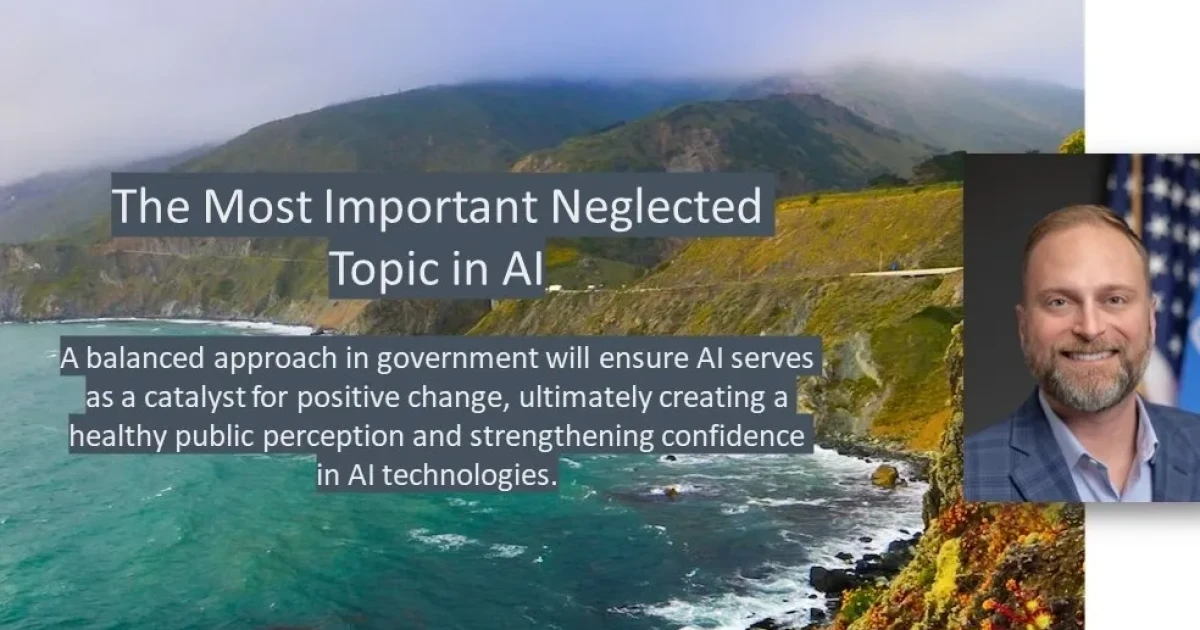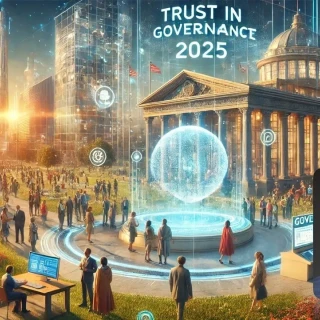45 Years Newsletter | The Most Important Neglected Topic in AI

Over the past 18 months, I have consumed a lot of media on artificial intelligence, but I've found that very few podcasts or publications focus on what I believe could be the most significant impact of this technology on our daily lives, for better or worse.
Current Conversation:
What I have noticed is an intense focus on some of the largest companies in the world and their growth opportunities through this technology revolution. I have heard about their internal dramas, learned about chip manufacturing, watched countless release videos of the newest models and listened to dozens of hours of podcasts about the political bias of AI and the threat of deep fakes in the upcoming elections. While all of these are relevant topics, we are largely missing what I believe to be the single most important topic over the next decade in this space. It is almost impossible to find a topic in AI that will be relevant in ten years, but this topic certainly spans the course of the next decade and should be the focus of much more attention than is in the current space.
Neglected Topic
The complexity of the topic and the public’s lack of understanding of the underlying systems is likely the reason for this focus deficit, but we really need to start building a much deeper dialogue of how GOVERNMENT is considering the utilization of AI in some of the most important spaces in our nation. Federal, state and local government’s use of AI is the topic with which we must engage with much more depth and consistency. It’s a complex and nuanced conversation, but I believe that government’s proper use of AI can help to mitigate risks of doom and have impacts on our society beyond on current understanding of what is possible. To be clear, this conversation is top of mind for many in government and organizations that support government, but my observation has been that the public dialogue is focused elsewhere.
Some Key Questions:
How is government building capacity around AI? What are ’they’ thinking when it comes to AI? What are the risks, how are they being considered and how can we use these tools to meet the outcomes that can drive our communities forward? What frameworks are being built to support agencies and leaders in evolving their understanding and utilization of AI? What foundation and capacity must be built from which to launch AI in government?
Deeper Context:
Congress is wrestling with the concept of a regulatory framework. While I have opinions on this front, the real conversation should be focused on how government agencies, especially those that serve humans directly, should be operationalizing these technologies and what risks they should be focused on protecting against. While my background is in the health and human services spaces, which serve about one-fourth of each state’s population annually, the dialogue is critical across all government verticals and the frameworks being developed today should be flexible to meet the risks and opportunities in all areas of government.
Transactional vs. Supportive Government
It is my observation that the utilization of AI and other emerging technologies in government can be segmented in a variety of ways, the most logical of which to me is between the uses within transactional government and supportivegovernment.
AI in Transactional Government
The role of government in many of our lives is as one side of a transaction. We are required to have a driver’s license to drive an automobile and state departments of public safety are charged with the efficient provision of them. We pay our taxes to state tax commissions and we drive on highways built by departments of transportation. AI’s impact on creating greater efficiency in delivering on the transactions of government will be a terrific short-term outcome. This segment discussion of AI in government is the most common in my circles as the transactional efficacy of government has been crushed by years of building demand, a structural workforce shortage and the challenges of fifty-year-old COBOL technology. We are already seeing significant work happening in this space, as transactional government modernization utilizing AI is ‘easier’ and the impacts will be felt in the short-term.
AI in Supportive Government
Supportive government using AI brings significantly greater challenge, risk and untold opportunities, but I believe that these are the stories we should be telling. Supportive government is critical in people navigating systems like education, the criminal justice system, child welfare and poverty fighting systems. As government builds capacity for AI, considers foundational values and seeks real outcomes in these spaces, our attention as a nation should be increasingly focused on the technology driven transformation of supportive government. These potential use cases are the ones that we should be exploring and the stories we should be telling. This is also the space in which there is the most risk, for which intentional strategies to mitigate should be developed.
Embracing Controlled Innovation in Government
In the private sector, there are many sayings about the importance of failures in achieving future successes. For example, phrases like “fail fast” and “failure is the steppingstone to success” highlight how setbacks are integral to innovation. If we seek to achieve real success in supportive government through the utilization of emerging technologies, we have to invest deeply in building the ‘sandbox’ for contained failures. This means creating environments where new ideas can be tested safely, and the consequences of mistakes are limited. Given the potentially severe implications of these technologies, government can’t simply ‘move fast and break things,’ but it can move with urgency in controlled experiments. These experiments should be carefully designed, with clear objectives and risk management strategies, and aligned with partners who share the goal of achieving outcomes built on system values and public benefit.
Pioneers in Government?
Pioneers in government are hard to find because the incentives often discourage real risk-taking. Bureaucratic structures and accountability measures typically prioritize stability over innovation, making it difficult for leaders to justify taking risks. Therefore, we must celebrate those government leaders who are willing to genuinely engage with new technologies like AI and identify and mitigate associated risks. Their openness to experimentation and innovation is crucial for driving progress.
Fortunately, there are a growing number of pioneer leaders in government and aligned nonprofit organizations that are spearheading the responsible development and deployment of artificial intelligence to create immediate, transactional improvements and facilitate long-term, transformative changes in supportive government systems. By investing in and contributing to these collective efforts, we can enhance public trust in AI through demonstrable, improved outcomes in government services.
Emphasizing a balance of prudence and innovation, organizations should focus on the potential of AI to eliminate biases, streamline operations, and foster deeper community relationships. A balanced approach in government will ensure AI serves as a catalyst for positive change, ultimately creating a healthy public perception and strengthening confidence in AI technologies.


